Some of the links in this post may be affiliate links.
No houseplant collection is complete without a Peace Lily (Spathiphyllum). Although they are very common, there is a reason for this!
They are very low maintenance, will survive very low light indoors, and they often will tell you when they need water! And as a bonus, I don’t know of any other plant that will bloom in low light like this plant can.
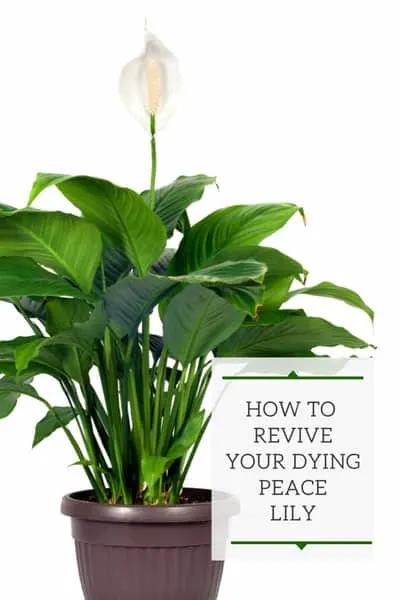
Table of Contents
Growing Peace Lily
Light
Peace lilies prefer bright indirect light. You’ll want to keep too much direct sun away from these plants because the leaves will easily burn with too much harsh sun.
Morning sun, however, is gentle enough in most cases as long as it is not for too long. Northern exposure and Eastern exposure windows are wonderful for these plants.
I’ve even grown Peace Lilies in an office with just overhead lighting and no windows at all. They will even bloom for you sometimes in these conditions!
Peace lilies are one of the few plants that I would ever recommend for an office or room with no windows, provided that you have artificial light on for several hours of the day.
Be sure not to miss my blog post on the lowest light plants for no-window spaces for other recommendations other than peace lily!
If you do provide your peace lily with appropriate light though, it should reward you with plenty of flowers.
Sometimes, you will find that they even have a slight fragrance!
If flowers are not your goal though, and you are happy with the beautiful glossy leaves, you can get away with less light. Just monitor your plant and you will know if it is happy or not.

Temperature
Peace lilies like it warmer, so if you are comfortable, your peace lily is probably comfortable too!
Try to stick with a temperature range of 65F-85F for best results.
Watering
These plants definitely enjoy being on the moister side when it comes to their potting soil.
If you let it dry out too much, you will quickly see the entire plant start to wilt and collapse. If you notice this, be sure to give it a very thorough watering.
When this happens to mine, I take it to my kitchen sink and give it a very thorough soaking. Your plant will quickly recover.
That being said, try not to let it get to the point where it wilts from needing water. If you wait too long, your plant may die. And if you repeat the wilting/recovering process too much, you will weaken your plant over time.
If you find that your plant has gone bone dry and you try watering your plant and the water seems to go straight through quickly and doesn’t absorb much, you’ll have a little work to do.
Sometimes when potting mixes get super dry, they become difficult to re-wet.
In these cases, you may need to water your pot several times in a row until you can feel that the pot is heavier and that the soil has actually absorbed water instead of just streaming through.
Otherwise, if you don’t do this, you may find that your plant will wilt again from the soil going dry very soon afterwards.
Repotting
I have an entire blog post that shows with pictures how I repotted one of my peace lilies.

Peace lilies grow pretty quickly and can develop pretty vigorous root systems. Be sure not to miss my blog post on repotting a peace lily with step by step instructions.
There is one very critical step in repotting that you want to make sure you don’t miss.
And if you’re looking for an amazing potting mix for peace lilies, check out the Rainforest Soil Blend from Oh Happy Plants. Their mixes are AMAZING! And you will get 10% off automatically at checkout for any products when you use my link.
Fertilizing
Like all of my houseplants, I like to fertilize dilutely at every watering starting in late Winter and continuing through early Fall. I purchase most of my fertilizers on Amazon.
My favorite fertilizer to use is Dyna-Gro Grow. It is a premium fertilizer that contains all micro and macro nutrients that plants need to thrive. I use this fertilizer on all of my tropical foliage plant and great success!
Simply add 1/4 teaspoon per gallon of water.
CLEANING PEACE LILY LEAVES
There are several different varieties of peace lilies with varying sizes of leaves, ranging from small and narrow, to large and broad.
Some varieties have pretty large leaves, and all of them will attract quite a bit of dust!
For optimal health and growth of any plant, you should take care of those dusty leaves.
You can either use a damp sponge or damp paper towel to wipe any dusty leaves off.
Another way, perhaps quicker, would be to place your plant in the sink or in the shower, and wash off any dusty leaves, while simultaneously give your plant a nice thorough watering!
If your plant is blooming, don’t be surprised if you see a lot of white dust or powder on the leaves. Don’t mistaken this for pests. It is simply pollen, and they produce a lot!
PROPAGATING PEACE LILY
The best way to propagate peace lily is to simply divide the plant at the roots when it is time to repot.
FREQUENTLY ASKED QUESTIONS
Are you having problems with your peace lily? Here are some common problems with solutions to help you out!

Why am I getting brown tips?
Brown tips in peace lilies are normally caused by extremes in moisture. This occurs especially if you let your plant dry out so much that it wilts.
If you do this repeatedly, you will find that it will develop brown tips.
On the opposite end, if you keep it wet for too long, you may also get brown tips.

If you haven’t repotted your plant in a very long time and it is severely root bound, the roots are in such tight quarters that even when you water, it may not thoroughly moisten the entire root system and dry tips may result.
Brown tips in peace lilies can also result from too many fertilizer salts. This can be the case if you’ve had your plant in the same pot for many years and you can physically see crusty buildup (either from hard water and/or fertilizer.)
For a more in depth discussion on brown tips in plant, check out my blog post on the 6 top reasons your leaves are brown and crispy.
Why is my peace lily drooping, wilting, or having limp leaves?
This can be caused by either your plant going completely dry for a while OR from your plant staying wet for a long time.
When you notice that your plant has wilted and started to collapse, immediately use your finger to check the soil.
If the soil is bone dry, immediately give it a deep, thorough watering. It will recover within a few to several hours.
On the other hand, if the plant has wilted and you feel the soil and it is moist, it probably means that your plant sat in water for too long and has suffered root rot.
If you notice this, promptly discard any extra water that it may be sitting in and let the soil dry out. If you smell the soil and it smells rancid or rotten, your plant may have suffered root rot.
Keep an eye on your plant for a while and see if it recovers.
If it doesn’t recover much after a few days, your plant probably suffered root rot.
At this point, if the plant is still salvageable, repot it. Take the plant out of its pot, remove any loose soil and dead roots, and repot.
Be extra careful if you have your plant in a plastic pot with drainage holes, but it is slipped into a decorative pot with no drainage hole. It is all too easy to allow your plant to sit in water if you have this set up. Slip the inner pot out and discard any standing water.
There are more factors to consider than what I just mentioned. Be sure to check out my detailed blog post on 11 different causes for your peace lily drooping.
Why is my peace lily yellowing?
There are numerous factors that can cause yellow leaves on your plant.

Yellow leaves can result from excessively dry soil, and also from being wet for too long. Just stick your finger in the soil to determine which.
Yellow leaves can also be caused if your peace lily is sitting in too much direct sun. In this case, the entire plant will have yellowish leaves and not just one or two. Simply move it to a location that has less direct sun.
To read more about yellowing plant leaves and the various causes, refer to my blog post on tips to fix plants with yellow leaves.
Why are the flowers turning green or brown?
This is completely normal! No flower will last forever.
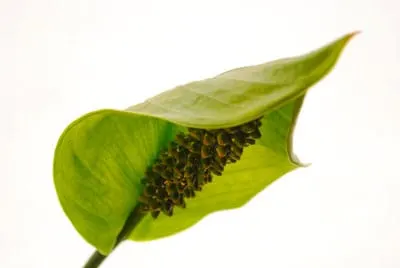
The pure white flowers will eventually fade and the spathe will often turn green like in the photo above, and then turn brown.
You can cut the whole flower stem off at that point.
PEACE LILY TOXICITY
Peace lily is toxic to cats and dogs because of calcium oxalate according to the ASPCA.
That’s all folks! I hope this post has been helpful. As common as peace lilies are, they are beautiful houseplants and there should be at least ONE in your houseplant collection!


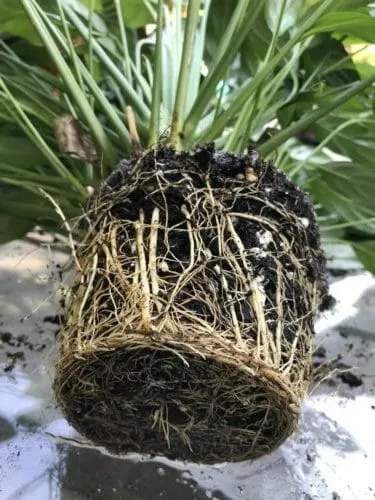

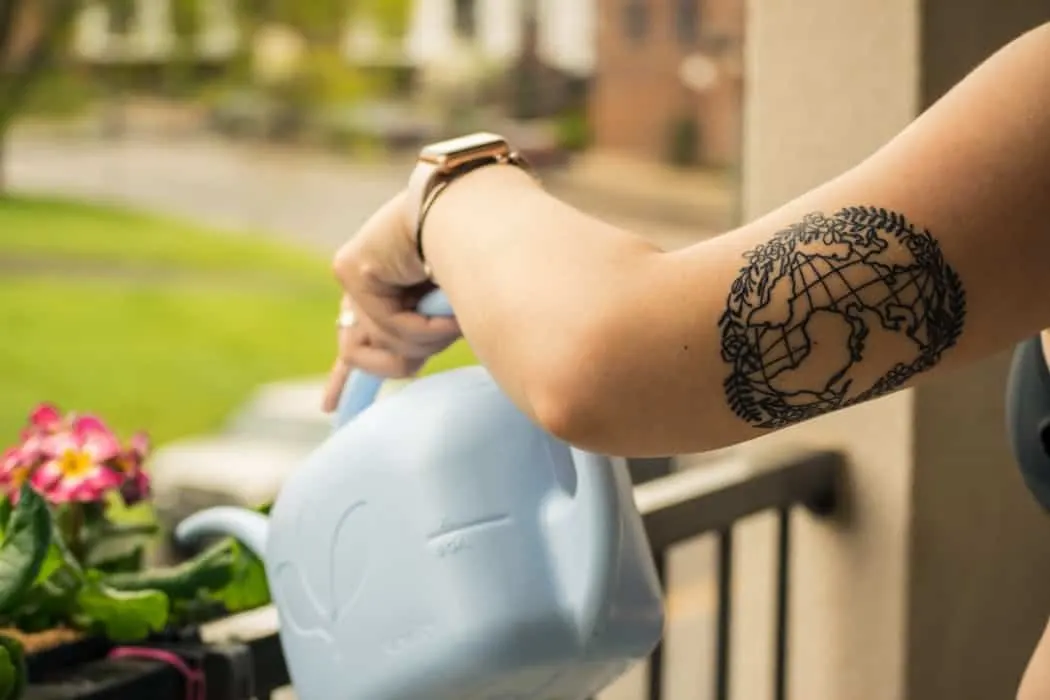
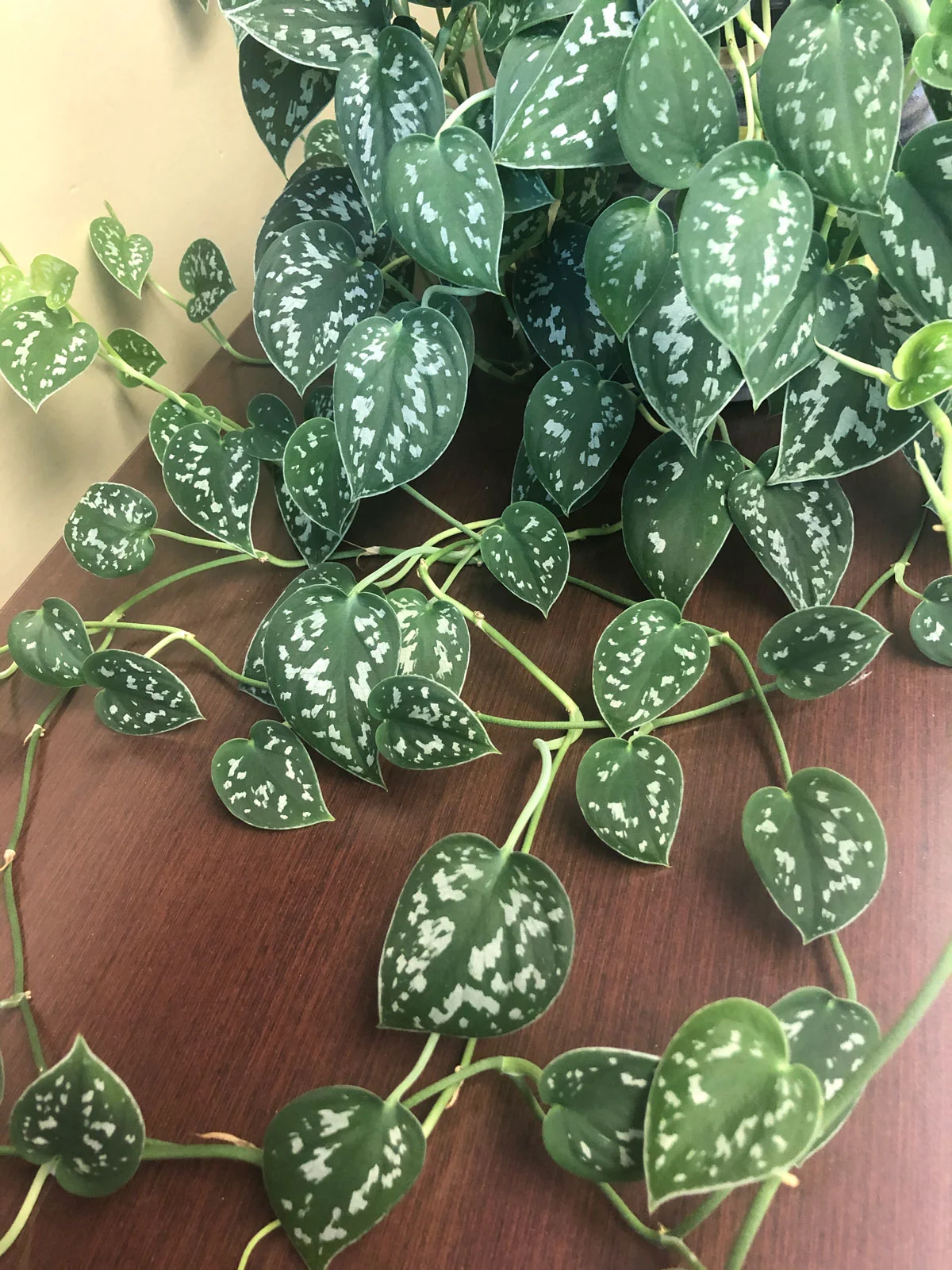
Heather
Wednesday 15th of May 2024
Hi, my peace lily looked like the picture above of the brown dried out crunchy leaves. I cut the leaves and stems off down to their bulbs since they were dead. Is there any chance of them coming back? The bulbs still seem to be ok and the soil is being kept moist. Please help.
Raffaele Di Lallo
Wednesday 15th of May 2024
Hi Heather! It's hard to say without seeing a photo, but give it a little time and it may come back. If any part of the base is still green, there may be hope still.
Karen
Thursday 5th of October 2023
Thanks for the information on drooping Lillies. I have been able to revive both of mine. Should I repot them. Like most of the comments- these were received when I I lost a loved one.
Raffaele
Friday 6th of October 2023
Hi Karen! Are there roots visible through the drainage holes? If so, I'd go ahead and repot. You may want to wait until Spring though at this point.
Joy
Wednesday 30th of August 2023
we had to travel and I forgot to plan for watering of my peace lilly- is there any special way besides watering to see if it has died or might revive?
Raffaele
Thursday 31st of August 2023
Just normal care is all that is needed. I do have a blog post on how to care for plants while you are away on vacation. Here it is...you may want to read through :-) https://www.ohiotropics.com/2019/01/15/watering-houseplants-while-away-on-vacation/
Tanya
Monday 7th of August 2023
I have a peace Lily that I have had for 32 years. I recently put some top soil on them(big mistake) that had fungus gnats in it and now I can’t get rid of the gnats and my plant is sick. Leaves are yellowing and the tips and edges of the leaves are brown. I put sand on the top and have stopped putting water to help dry the soil and kill the gnats but it doesn’t seem to be working because I still see gnats and my plant is no longer green and lush. HELP!!! I don’t want to have to throw my plant away!
Raffaele
Monday 7th of August 2023
Did you just top dress it with the top soil? Have you tried repotting it? Taking it out of the pot, loosening the roots, and giving it a good, fresh potting soil? I'm wondering if the leaf issues are coincidental and it needs to be repotted?
Arlene L
Saturday 8th of July 2023
I was given my peace lily after my Mom passed 10 years ago. It was getting very large so I repotted it. After awhile some leaves died off and now looks very sparse. Some leaves are growing back but are tiny. It does have two blooms on it now. I read where mixing currys powder with water and watering it helps the leaves stay green and healthy. Is this true and if so what would the ratio be of each. Thanks for your input.
Raffaele
Monday 10th of July 2023
Hi Arlene! I haven't heard anything about using curry powder. I would just start to use a good-quality fertilizer like I indicate in the post and use it regularly.